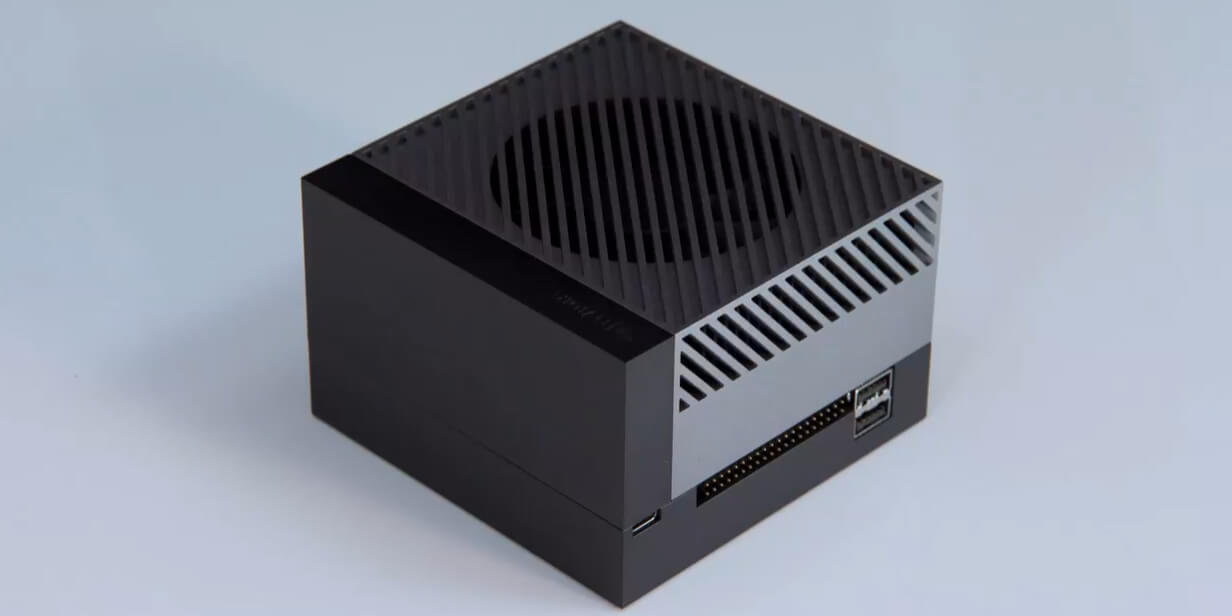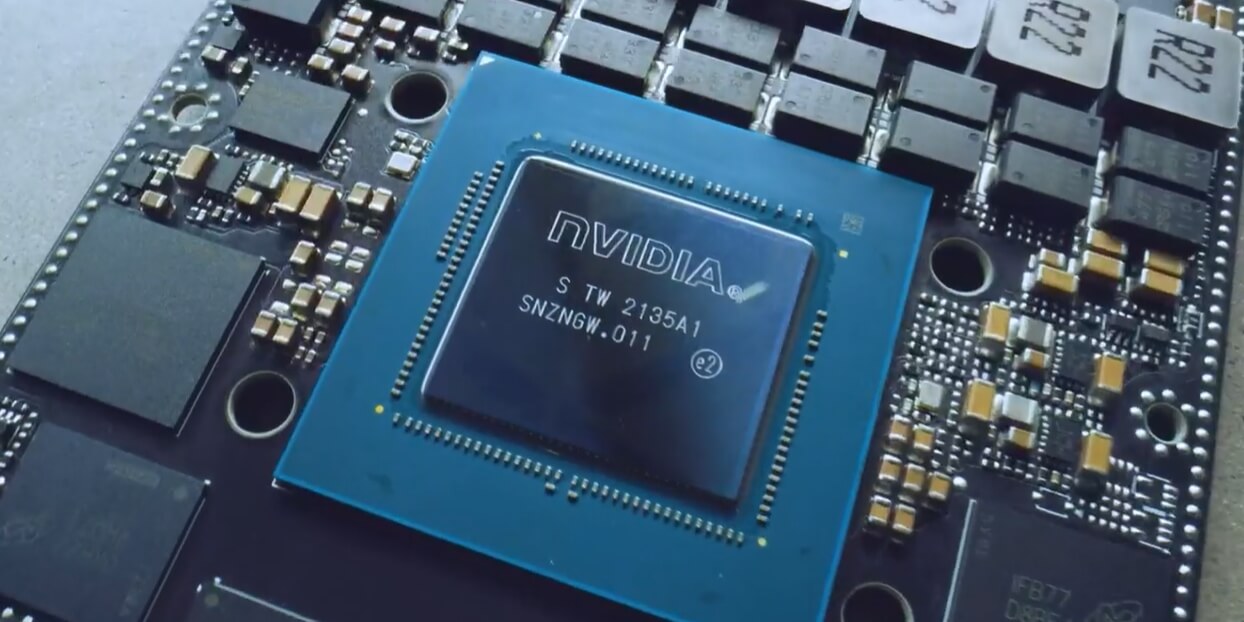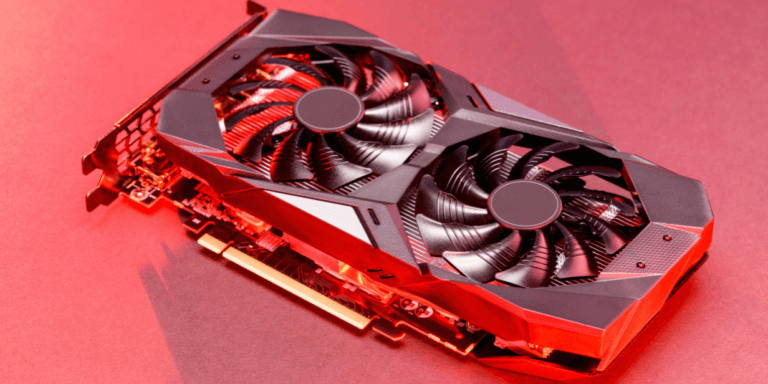Nano means super-small, one billionth of a meter, 0.000000001 meters. What about the Orin? From our research, the word is most likely derived from the Hebrew name Oren, so Orin means “pine tree.” Perhaps there’s a lot of punch packed into the pine nuts of this pine tree. 🙂
Seriously though, the NVIDIA Jetson Orin is a product developed by NVIDIA. It is a system-on-module (SoM) that is designed for use in autonomous machines and edge devices. It is based on the NVIDIA Orin SoC, which is a high-performance, low-power system-on-chip that is optimized for AI workloads.
A nano vs a pine tree. Source: Unsplash.
What is the Jetson Orin?
In addition to its high-performance GPU, the Jetson Orin also includes a powerful CPU, which can be used to run the inference engine and other software components of the LPR system. The Jetson Orin also includes a wide range of interfaces, including Gigabit Ethernet, USB, and serial ports, which can be used to connect to cameras, sensors, and other peripheral devices. As an FYI, Stream and Snapshot can run on just CPU and does not require GPU.
Drilling down a bit, the NVIDIA Jetson Orin SoM has the following specifications:
- NVIDIA Orin SoC: A high-performance, low-power system-on-chip that is optimized for AI workloads.
- CPU: Dual Arm Cortex-A78 cores at 2.8GHz, Dual Arm Cortex-A55 cores at 2GHz, and a Arm Cortex-M7 core at 400 MHz.
- GPU: NVIDIA Ampere architecture with 2nd Generation Tensor Cores, 320 Turing Tensor Cores, and 2,048 CUDA Cores.
- Memory: 16GB LPDDR5, 64-bit wide memory interface, and up to 64GB eMMC 5.1 flash storage.
- Networking: Gigabit Ethernet, Wi-Fi 6, and Bluetooth 5.2
- Video: 4Kp60 video encode and decode, 12-bit camera support, and display controller supporting up to 4x 4Kp60 displays.
- Interfaces: 2x USB 3.2, 2x USB 2.0, 2x MIPI-CSI, 2x MIPI-DSI, 2x UART, 2x I2C, 2x SPI, and 2x I2S.
- Power: 8-14W and thermal design power (TDP) of 12W.
- Dimensions: 50mm x 87mm
NVIDIA Jetson Orin. Source: Amazon.
AI and ALPR on Jetson Orin
The Jetson Orin module can be integrated into a wide range of devices, including drones, robots, and smart cameras, and is intended to provide the performance and power efficiency needed for running advanced AI and computer vision algorithms. This is great news because we serve ALPR across 90+ countries in a wide variety of use-cases, such as parking management, toll plazas, gated communities, weight systems, police surveillance and even drones. 🙂
These specs make Jetson Orin a powerful module that can handle multiple AI workloads and provide high performance with low power consumption.
In short, the NVIDIA Jetson Orin is well suited for license plate recognition (LPR) applications due to its high performance and low power consumption.
Insides of the NVIDIA Jetson Orin. Source: Amazon.
Jetson Nano and Jetson Orin Comparison
In many ways, the Jetson Orin is similar to the Jetson Nano. For those familiar with Plate Recognizer, you’ll know that we have supported the Jetson Nano for many years now.
As for a quick comparison, the NVIDIA Jetson Orin and Jetson Nano are both powerful AI-enabled systems-on-modules (SoMs) developed by NVIDIA, but they have some key differences.
- Performance: The Jetson Orin is a more powerful SoM compared to the Jetson Nano. It has a more advanced GPU with more CUDA cores, 2nd generation Tensor Cores, and Turing architecture, which allows it to handle more complex AI workloads and achieve higher performance.
- Memory: Jetson Orin has more memory capacity with 16GB LPDDR5 memory and 64GB eMMC flash storage, while Jetson Nano has 4GB LPDDR4 memory and 32GB eMMC flash storage.
- Power consumption: Jetson Orin has a lower thermal design power (TDP) of 12W while Jetson Nano has a TDP of 10W.
- Connectivity: Jetson Orin has Gigabit Ethernet, Wi-Fi 6 and Bluetooth 5.2, while Jetson Nano has Gigabit Ethernet, 802.11ac Wi-Fi and Bluetooth 4.2.
- Interfaces: Jetson Orin has more interfaces like 2x MIPI-DSI, 2x MIPI-CSI, 2x UART, 2x I2C, 2x SPI and 2x I2S.
- Size: Jetson Orin is slightly smaller in size of 50mm x 87mm compared to Jetson Nano of 70mm x 45mm.
So basically, the Jetson Orin is a more powerful and feature-rich SoM compared to Jetson Nano, but it also comes with a higher price tag. Jetson Nano, on the other hand, is more budget-friendly, and is suitable for applications that do not require as much performance and memory.
Examples of what Plate Recognizer Snapshot and Stream can handle. Source: Plate Recognizer.
Accuracy of ALPR on Jetson Orin
Since the Jetson Orin is even more powerful than the Jetson Nano, suffice to say that the Jetson Orin should produce ALPR results that are just as strong as that from the Jetson Nano.
Here are some examples of blurry, dark, low resolution images that the two devices can handle. It’s clear that Plate Recognizer delivers strong ALPR on the Jetson Orin.
Want to take a free test drive of Plate Recognizer on the Jetson Orin? Just sign up.









